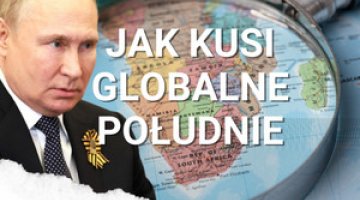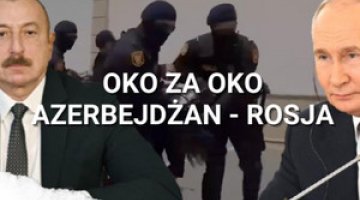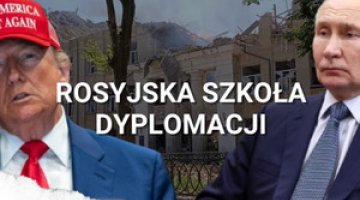Russia’s parliamentary elections: the choice without a choice

On 17–19 September, parliamentary elections were held in Russia, as were regional and local elections in some regions. 450 deputies to the State Duma (the lower house of parliament) were elected, as well as 9 governors and 39 regional parliaments, among others. According to the officially announced results, after 100% of the voting lists were counted, the party of power – United Russia – allegedly won 49.82% of the proportional vote for the party lists, as well as 198 out of the 225 single-member constituencies, where a relative majority is sufficient to win. The CPRF Communist party (18.93%) came second. The 5% electoral threshold was crossed by three other parties, among them the newly formed New People party. The turnout reached 51.68%. The Kremlin’s candidates also officially won in the first round in all the direct gubernatorial elections (9 regions).
The high official result is a formal success for United Russia, but it was achieved with difficulty, as a result of numerous manipulations and falsifications. These were facilitated by a three-day voting period and the significant number of votes which were cast outside polling stations. The work of independent observers was hindered to a greater degree than it has been in several years. The scale of the fraud may have reached around 30% of the total vote. The Communist party, the main beneficiary of the protest vote, achieved significant success. In view of the waning public support for the government, we should expect repression to increase over the coming years as the Kremlin prepares for the next presidential elections (scheduled for 2024) and, in the longer term, for the succession of power after Vladimir Putin.
The political context of the parliamentary elections
From 2020, the Kremlin has sought to reduce the level of competitiveness in this year’s elections as much as possible. Faced with two strategic goals – to maintain full control over the state and prepare in advance for a smooth succession to the presidency – the rulers focused on neutralising all potential threats. In 2020, the regime finally gave up the pretence of legalism and the pseudo-democratic façade. An unlawful constitutional reform was pushed through, and a number of repressive laws were introduced which radically restricted the freedom of speech and assembly, and de facto criminalised the activities of the opposition. The scale of repression against political opponents also noticeably increased. The primary catalyst for these actions were the mass protests in Belarus in 2020 and the deteriorating public mood in Russia. Since 2018 public discontent has been growing, mainly due to social problems. In August 2021, 44% of respondents believed that the country was going in the wrong direction, and 37% did not support President Putin’s actions (all data in this article come from the independent Levada Center). Support for United Russia fell below 30% even in polls conducted by state-controlled institutions, the lowest levels since 2008.
In this context, the Kremlin’s preventive actions were mainly aimed at the organisations set up by Alexei Navalny (they were banned as ‘extremist’), as well as the free media and the internet. The repression primarily targeted the ‘smart voting’ project, in which Navalny’s activists encouraged Russians to vote for the Kremlin’s strongest opponents. In 2020–1 active supporters of Navalny had their passive suffrage significantly restricted under the retroactive law of June 2021 (formally for ‘participation in the activities of an extremist organisation’). Other opposition candidates were also blocked from starting under various pretexts, and the small group of the Kremlin’s real opponents who were permitted to run (from the lists of the ‘licensed opposition’, including the Yabloko party and the CPRF) were hindered in their campaigning. The media were hit, among others, by stricter regulations on ‘foreign agents’, and the unprecedented online censorship was justified in terms of defending Russia’s sovereignty against interference from the West. One effect of these activities was a marked increase in political emigration.
The Kremlin also tried to win the voters’ favour by exploiting social issues. The measures taken to this end included a series of one-off benefits for families with children and pensioners (the total amount of pre-election transfers reached 700 billion roubles, i.e. about US$9.5 billion), as well as refreshing the image of the United Russia party. The unpopular Dmitri Medvedev, formally the party’s leader, was invisible during the campaign. Instead, the most prominent figures on the UR party list included Anna Kuznetsova, the children’s rights spokeswoman, and Denis Protsenko, a physician and the face of the Russian fight against the pandemic. Other leading figures (the defence and foreign ministers Sergei Shoigu and Sergei Lavrov) symbolised Russia’s superpower status. As regards the growing need for change in society, the government responded by creating the New People party in 2020 (a pro-Kremlin grouping running under liberal slogans, including support for small businesses).
How the vote went off
For the first time in Russian parliamentary elections, non-transparent forms of voting were used on a mass scale; these had first been tested during the 2020 constitutional referendum. The election lasted three days, and in some cases, violations of voting storage procedures led to unequivocal fraud. On the first day, polling stations across Russia were besieged by crowds of public-sector employees who had been forced to vote on that day by their employers and the local authorities. The possibility of voting outside polling stations (including at home) was extended: such procedures, which in some regions were applied on a mass scale, generally make independent observation impossible. In seven regions of Russia an online voting system was introduced, including in Moscow – where, according to independent estimates, support for United Russia probably does not exceed a figure between 10 and 20 percent. Russians were encouraged – or forced – in every possible way to register as online voters (and a total of about 2.5 million people did so). This procedure has been criticised by independent experts as it does not allow for the transparency and fairness of the election process, including the protection of personal data, to be adequately verified; indeed, serious irregularities were noted only a few hours after the elections began. Another novelty this year was the participation of residents of the occupied Donbas in Ukraine who had obtained Russian citizenship. Of these, about 600,000 people were eligible to vote; they were brought en masse to vote in the Rostov oblast, and also had the opportunity to vote online (both of these procedures were highly opaque). United Russia’s electoral list also included Aleksandr Borodai, a separatist leader and chairman of the Union of Donbas Volunteers.
Other types of violations were also reported: manipulation of voter lists, ballot stuffing, carousel voting in some regions (the same people casting ballots multiple times), and even overt vote buying. Recordings which revealed members of the election commissions being instructed about what results were to be included on the final tallies leaked online. Compared to the previous parliamentary election in 2016, the working conditions for independent observers were also much worse: the authorities went so far as to ask them to leave polling stations, some were detained by the police, and some were beaten. The ability to track video broadcasts from polling stations online was also significantly limited: in recent years this had been one of the few effective mechanisms for detecting and publicising electoral fraud. Observers noted a rise in the number of violations in areas which had hitherto been perceived as relatively transparent (including Moscow).
During the election, the authorities managed to force Google and Apple to remove the ‘Navalny!’ app with its ‘smart voting’ list from the catalogue of services available to Russian users. To blackmail these companies, their local employees were threatened with criminal cases for ‘disseminating illegal content’ and ‘interfering with the course of the Russian elections’. Information on ‘smart voting’ was also blocked – at the demand of the authorities – by YouTube and the Telegram messenger.
After voting ended, a large group of electoral commission members representing the opposition were detained in St. Petersburg, and in Moscow the count was temporarily interrupted. The results of the online vote in the capital were announced only on 20 September, after a significant delay.
Assessment of the results and forecast
According to the implausible results, as officially announced after 100% of the votes had been counted, United Russia won 49.82% in the party-list voting, and 198 out of the 225 single-member constituencies. This could bring it at least 315 seats in the Duma (compared with 343 in the previous term). The Communist Party of the Russian Federation (18.93%) came second: in Yakutia and the Nenets Autonomous Okrug it even defeated United Russia (35.15% to 33.22%, and 31.98% to 29.06% respectively) and will increase its representation in the lower house. The nationalist LDPR under Vladimir Zhirinovsky won 7.55%, Just Russia (which in 2021 merged with Zakhar Prilepin’s nationalist party For Truth) got 7.46%, and the New People party also crossed the electoral threshold (5.32%). These data favour United Russia by 5–10 pp, in relation to the pre-election polls and exit polls conducted exclusively by Kremlin-controlled institutions. Not a single opposition candidate in Moscow was permitted to win in the single-mandate constituencies, although in most of them they were leading almost to the end. Only the official results of the online voting decided their alleged losses. According to official results, United Russia is also leading in the local and regional elections; all the Kremlin’s candidates for governors avoided the run-off (with Ramzan Kadyrov officially gaining almost 100% support in Chechnya). The scale of possible fraud should be assessed as significant, although at this stage it is difficult to estimate its percentage share of the total results (it usually amounted to about 20% in parliamentary elections, and ran at around 30% in the constitutional referendum). The official turnout was given as 51.68% (higher than in the 2016 elections), and around 93% among those registered for online voting.
The Kremlin treated this year’s parliamentary elections as a kind of general test to reveal the strengths and weaknesses of the system in preparation for the presidential elections. The official results do not come as a surprise: from the Kremlin’s point of view, United Russia passing the threshold of two-thirds of the seats (a constitutional majority) is the necessary minimum, for political and image reasons. This should guarantee the one-party control over key legislative decisions, including possible amendments to the constitution in view of the future presidential succession. It also serves to build the conviction that the government is actively supported by the vast majority of society; it is supposed to demobilise the active, pro-democratic minority and persuade the elite to remain fully loyal. As indicated by the course of voting, however, it took considerable effort to achieve this result, which was brought about largely due to political purges and the significant scale of electoral fraud (the party’s highly unsatisfactory results in Asian Russia are noteworthy in this regard).
The CPRF party, a target of ruthless, Kremlin-orchestrated attacks in the election campaign, became the main beneficiary of the protest vote. The latter, as it is not burdened with the risk of direct repression, has become a much safer way to express opposition than street demonstrations, which were de facto banned by the laws adopted in 2020–1. The support from Navalny’s ‘smart voting’ project (which backed 137 Communists out of the 225 candidates listed) could have contributed to the party’s success. The good results for the New People party were determined both by the authorities’ top-down guidelines and the votes of that part of the urban electorate who are partially loyal to the system but disapprove of United Russia. The big loser of this year’s elections is the LDPR party; this demonstrates that interest in social problems is rising among the public, and the appeal of nationalist-superpower rhetoric is falling (a trend which has also been reflected in recent public opinion surveys).
The change in party configuration in the Duma will not lead to greater pluralism or moderate the government’s political course. On the contrary, in view of the waning support for the regime, we should expect to see an intensification of repression over the next few years, as well as increasing ambitions on the Kremlin’s part to exercise political control over society in a totalitarian spirit. The authorities will focus on minimising the influence of opposition and civic activists (both residing within the country and abroad) on the attitudes of the Russian public; on blocking independent content on the internet; tracking down ‘disloyalty’ and limiting Russians’ contacts with Western countries. However, these activities may prove counterproductive in the face of growing social discontent, and could even contribute to the radicalisation of the public mood over the coming years.





